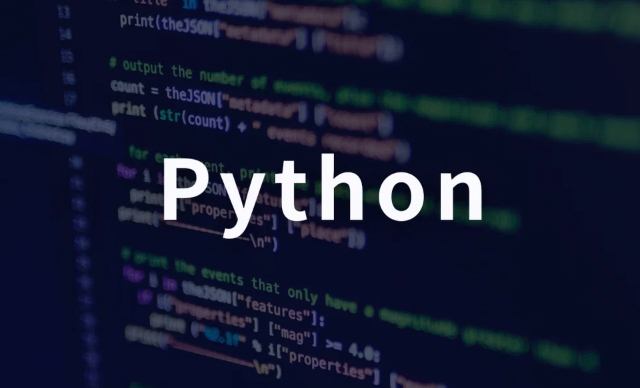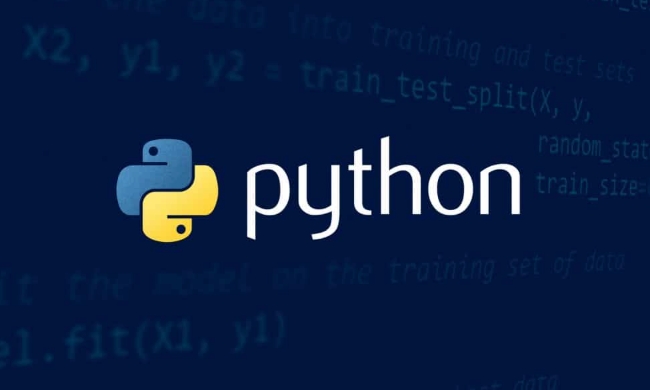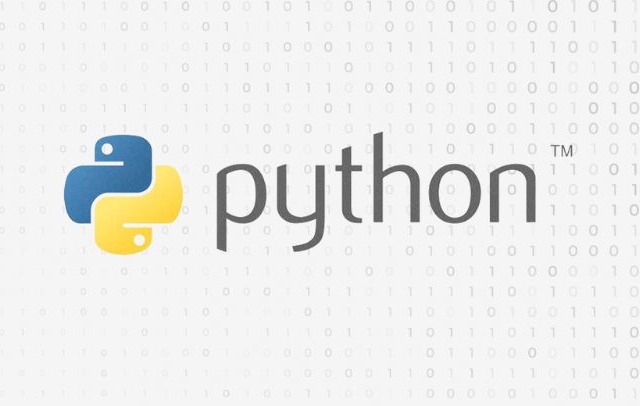Working with abstract base classes in Python
Jul 12, 2025 am 02:14 AMAbstract base class (ABC) is a tool used in Python to define interfaces. It is implemented through the abc module and cannot be instantiated. It must be inherited by subclasses and implements its abstract methods. 1. Use abc.ABC and @abstractmethod to define abstract methods to ensure that subclasses implement specific interfaces; 2. The abstract base class can contain specific methods for subclass inheritance; 3. Support multi-level inheritance to further refine abstract requirements; 4. Abstract properties can also be defined to force subclasses to implement attributes. It helps improve code readability, avoid runtime errors, and is suitable for building clear structured projects.

Abstract Base Classes (ABC) is a tool used to define interfaces in Python. It can help you write clearer and more structured code. If you are writing a class structure that needs to be inherited and extended, it will be helpful to use ABC well.

What is an abstract base class?
Simply put, an abstract base class is a class that cannot be instantiated. Its function is to define some methods that must be implemented by subclasses. Python's abc module provides support, you can define abstract methods by inheriting ABC class and using the @abstractmethod decorator.
For example:

from abc import ABC, abstractmethod
class Animal(ABC):
@abstractmethod
def make_sound(self):
pass This Animal class is an abstract base class, you cannot create an Animal() instance directly. Only subclasses that implement make_sound method can be instantiated.
Why use abstract base classes?
- Force subclasses to implement specific methods : Ensure that all subclasses have consistent interfaces.
- Improve code readability : You can tell which methods must be implemented at a glance.
- Avoid runtime errors : If you forget to implement a method, an error will be reported when instantiated, rather than waiting until the actual call is done to discover the problem.
For example, if you write a program that deals with multiple animal sounds, if you do not force make_sound , you may add an animal class one day but forget to write this method, and the program may make an error.

How to use abstract base classes correctly?
1. Use abc.ABC and @abstractmethod
This is the most standard way. Inherit ABC and add the @abstractmethod decorator to the method to be enforced.
2. You can use a mixture of ordinary methods and abstract methods
There can be specific implementation methods in abstract base classes, and these methods will be inherited by subclasses. for example:
class Animal(ABC):
@abstractmethod
def make_sound(self):
pass
def sleep(self):
print("Sleeping...") In this way, all subclasses can call sleep() directly.
3. Support multi-level inheritance
You can define an abstract subclass based on the abstract base class and continue to abstract. for example:
class Mammal(Animal):
@abstractmethod
def walk(self):
pass At this time, any class that implements Mammal must implement make_sound and walk at the same time.
4. Abstract properties are also OK
In addition to methods, you can also require subclasses to implement properties:
class Animal(ABC):
@property
@abstractmethod
def species(self):
passFrequently Asked Questions and Notes
- Don't abuse abstract base classes : not every class requires abstraction. If you just want to organize your code, you don't have to use ABC.
- Cannot instantiate abstract classes : This is a mistake that is easy to make at the beginning, remember to only use subclasses.
- Can abstract methods be implemented? Not necessarily : Although not usually, you can also provide a default implementation, and subclasses can choose whether to override.
- Use it in conjunction with other mechanisms : for example, you can use
@classmethodor@staticmethodto cooperate withabstractmethod.
In general, abstract base classes are a very practical tool, especially suitable for building projects with a certain hierarchy. If used well, it can make the code clearer and safer. Basically that's it.
The above is the detailed content of Working with abstract base classes in Python. For more information, please follow other related articles on the PHP Chinese website!

Hot AI Tools

Undress AI Tool
Undress images for free

Undresser.AI Undress
AI-powered app for creating realistic nude photos

AI Clothes Remover
Online AI tool for removing clothes from photos.

Clothoff.io
AI clothes remover

Video Face Swap
Swap faces in any video effortlessly with our completely free AI face swap tool!

Hot Article

Hot Tools

Notepad++7.3.1
Easy-to-use and free code editor

SublimeText3 Chinese version
Chinese version, very easy to use

Zend Studio 13.0.1
Powerful PHP integrated development environment

Dreamweaver CS6
Visual web development tools

SublimeText3 Mac version
God-level code editing software (SublimeText3)

Hot Topics
 Polymorphism in python classes
Jul 05, 2025 am 02:58 AM
Polymorphism in python classes
Jul 05, 2025 am 02:58 AM
Polymorphism is a core concept in Python object-oriented programming, referring to "one interface, multiple implementations", allowing for unified processing of different types of objects. 1. Polymorphism is implemented through method rewriting. Subclasses can redefine parent class methods. For example, the spoke() method of Animal class has different implementations in Dog and Cat subclasses. 2. The practical uses of polymorphism include simplifying the code structure and enhancing scalability, such as calling the draw() method uniformly in the graphical drawing program, or handling the common behavior of different characters in game development. 3. Python implementation polymorphism needs to satisfy: the parent class defines a method, and the child class overrides the method, but does not require inheritance of the same parent class. As long as the object implements the same method, this is called the "duck type". 4. Things to note include the maintenance
 Explain Python generators and iterators.
Jul 05, 2025 am 02:55 AM
Explain Python generators and iterators.
Jul 05, 2025 am 02:55 AM
Iterators are objects that implement __iter__() and __next__() methods. The generator is a simplified version of iterators, which automatically implement these methods through the yield keyword. 1. The iterator returns an element every time he calls next() and throws a StopIteration exception when there are no more elements. 2. The generator uses function definition to generate data on demand, saving memory and supporting infinite sequences. 3. Use iterators when processing existing sets, use a generator when dynamically generating big data or lazy evaluation, such as loading line by line when reading large files. Note: Iterable objects such as lists are not iterators. They need to be recreated after the iterator reaches its end, and the generator can only traverse it once.
 How to iterate over two lists at once Python
Jul 09, 2025 am 01:13 AM
How to iterate over two lists at once Python
Jul 09, 2025 am 01:13 AM
A common method to traverse two lists simultaneously in Python is to use the zip() function, which will pair multiple lists in order and be the shortest; if the list length is inconsistent, you can use itertools.zip_longest() to be the longest and fill in the missing values; combined with enumerate(), you can get the index at the same time. 1.zip() is concise and practical, suitable for paired data iteration; 2.zip_longest() can fill in the default value when dealing with inconsistent lengths; 3.enumerate(zip()) can obtain indexes during traversal, meeting the needs of a variety of complex scenarios.
 Explain Python assertions.
Jul 07, 2025 am 12:14 AM
Explain Python assertions.
Jul 07, 2025 am 12:14 AM
Assert is an assertion tool used in Python for debugging, and throws an AssertionError when the condition is not met. Its syntax is assert condition plus optional error information, which is suitable for internal logic verification such as parameter checking, status confirmation, etc., but cannot be used for security or user input checking, and should be used in conjunction with clear prompt information. It is only available for auxiliary debugging in the development stage rather than substituting exception handling.
 What are Python type hints?
Jul 07, 2025 am 02:55 AM
What are Python type hints?
Jul 07, 2025 am 02:55 AM
TypehintsinPythonsolvetheproblemofambiguityandpotentialbugsindynamicallytypedcodebyallowingdeveloperstospecifyexpectedtypes.Theyenhancereadability,enableearlybugdetection,andimprovetoolingsupport.Typehintsareaddedusingacolon(:)forvariablesandparamete
 What are python iterators?
Jul 08, 2025 am 02:56 AM
What are python iterators?
Jul 08, 2025 am 02:56 AM
InPython,iteratorsareobjectsthatallowloopingthroughcollectionsbyimplementing__iter__()and__next__().1)Iteratorsworkviatheiteratorprotocol,using__iter__()toreturntheiteratorand__next__()toretrievethenextitemuntilStopIterationisraised.2)Aniterable(like
 How to make an object a generator in Python?
Jul 07, 2025 am 02:53 AM
How to make an object a generator in Python?
Jul 07, 2025 am 02:53 AM
To make an object a generator, you need to generate values ??on demand by defining a function containing yield, implementing iterable classes that implement \_\_iter\_ and \_next\_ methods, or using generator expressions. 1. Define a function containing yield, return the generator object when called and generate values ??successively; 2. Implement the \_\_iter\_\_ and \_\_next\_\_\_ in a custom class to control iterative logic; 3. Use generator expressions to quickly create a lightweight generator, suitable for simple transformations or filtering. These methods avoid loading all data into memory, thereby improving memory efficiency.
 How to call Python from C ?
Jul 08, 2025 am 12:40 AM
How to call Python from C ?
Jul 08, 2025 am 12:40 AM
To call Python code in C, you must first initialize the interpreter, and then you can achieve interaction by executing strings, files, or calling specific functions. 1. Initialize the interpreter with Py_Initialize() and close it with Py_Finalize(); 2. Execute string code or PyRun_SimpleFile with PyRun_SimpleFile; 3. Import modules through PyImport_ImportModule, get the function through PyObject_GetAttrString, construct parameters of Py_BuildValue, call the function and process return






